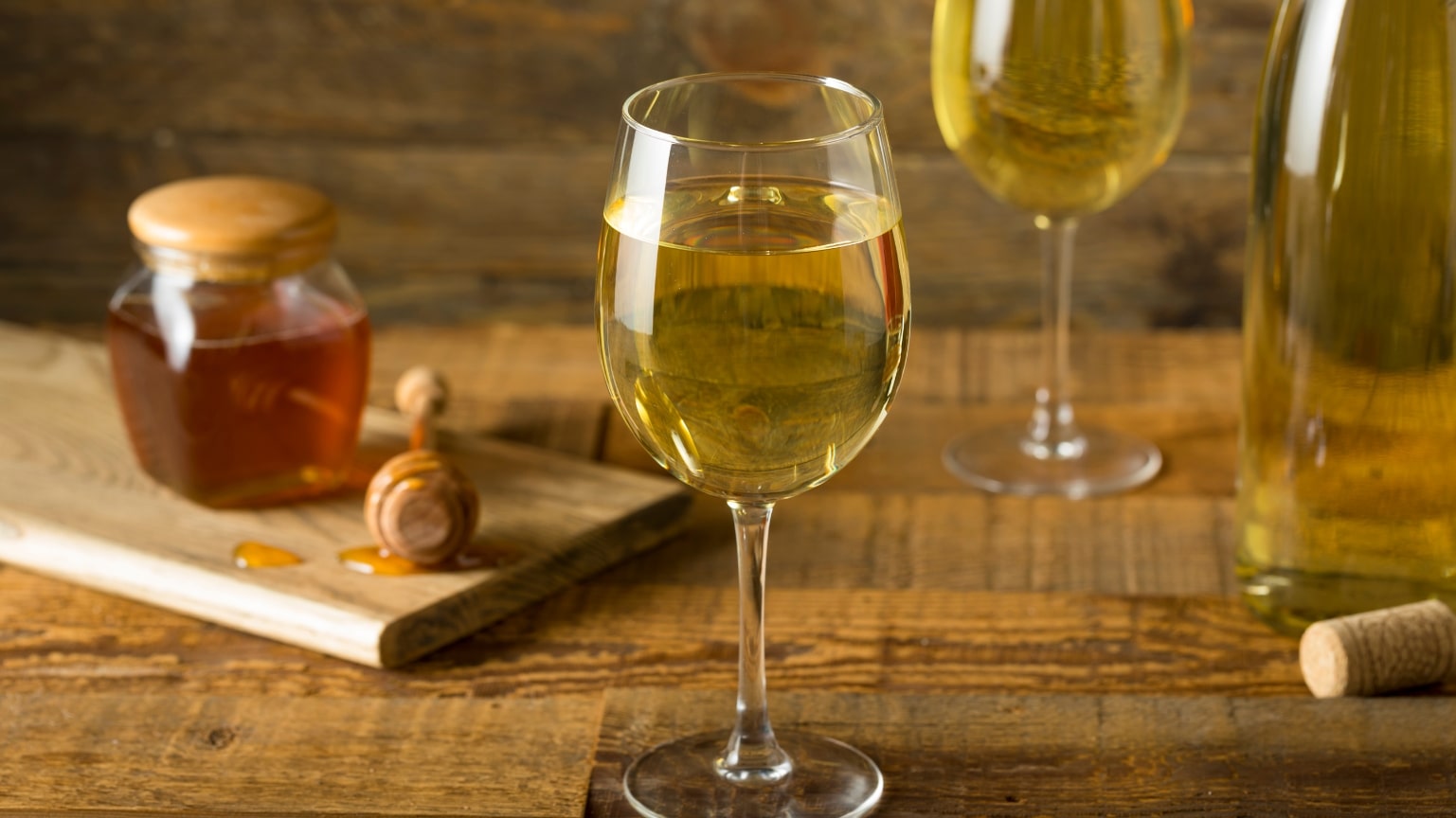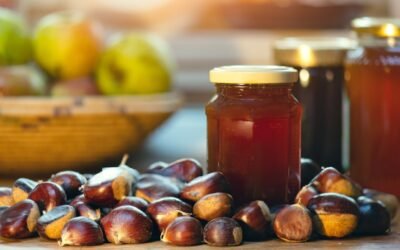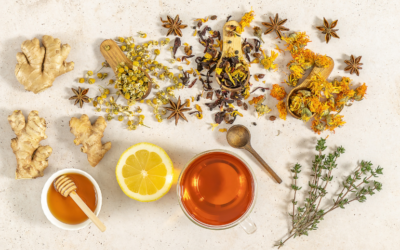
Mead, often referred to as the “nectar of the gods,” is an ancient and versatile alcoholic beverage made by fermenting honey with water. With a rich history dating back thousands of years, mead is experiencing a resurgence in popularity as enthusiasts rediscover the art of homebrewing. In this comprehensive guide, we’ll explore the step-by-step process of making mead at home, from selecting ingredients to bottling the final product.
Ingredients to Make Mead
- Honey:
- Choose high-quality, raw honey for the best flavour. The type of honey will influence the mead’s taste, so experiment with different varieties.
- Water:
- Use filtered or spring water to avoid any unwanted impurities that might affect the taste of your mead.
- Yeast:
- Select a suitable yeast strain for mead-making. Common choices include champagne yeast, ale yeast, or mead-specific yeast strains. Each imparts unique characteristics to the final product.
- Nutrients:
- Mead yeast requires proper nutrients for a healthy fermentation process. Nutrient blends designed for mead, or individual components like yeast energizer and yeast nutrient, can be used.
Equipment for Mead Making
- Fermentation Vessel:
- Choose a food-grade plastic or glass vessel with an airlock to allow gases to escape during fermentation.
- Siphon or Racking Cane:
- Essential for transferring mead between vessels while minimizing sediment disturbance.
- Airlock:
- Ensures a one-way escape for carbon dioxide while preventing contaminants from entering the fermentation vessel.
- Hydrometer:
- Measures the specific gravity of the mead, helping to monitor the fermentation progress.
- Sanitization Supplies:
- Maintain a sterile environment by using a no-rinse sanitizer to clean all equipment thoroughly.
How to make mead at home step by step
1. Sanitization
- Sanitize all equipment, including fermenters, airlocks, and utensils, to prevent contamination.
2. Mixing the Must
- In a clean container, mix honey with water to create the must. The ratio of honey to water determines the sweetness of the final mead.
3. Aeration and Nutrient Addition
- Aerate the must by stirring vigorously, and then add yeast nutrients to support a healthy fermentation.
4. Pitching the Yeast
- Once the must has cooled to a suitable temperature, typically around 70-75°F (21-24°C), pitch the yeast into the must. Seal the fermentation vessel with an airlock.
5. Fermentation
- Allow the mead to ferment, typically for one to two weeks. Monitor the airlock activity and use a hydrometer to track the specific gravity.
6. Racking
- Transfer the mead to a secondary fermentation vessel, leaving sediment behind. This aids in clarifying the final product.
7. Bulk Aging
- Allow the mead to age in the secondary vessel for several weeks to months, enhancing its flavor and clarity.
8. Bottling
- Once the mead has clarified and fermentation has ceased, carefully siphon the mead into sanitized bottles, leaving sediment behind.
9. Final Touches
- Seal the bottles with sanitized caps or corks. Optionally, add a small amount of additional honey for carbonation in a sealed environment.
10. Aging
- Allow the mead to age in the bottles for several months, or even years, to develop its full flavour profile.
Tips for Success in Making Mead
- Patience is Key: Mead often improves with age, so resist the temptation to consume it too quickly.
- Experiment with Flavors: Add fruits, spices, or herbs during fermentation for unique flavour profiles.
- Record Keeping: Maintain a brewing log to track ingredients, measurements, and observations for future batches.
Frequently Asked Questions
Is mead hard to make?
Making mead is not inherently difficult, but it does require attention to detail and patience. The process involves mixing honey with water to create a must, pitching yeast, and allowing the mixture to ferment. While the steps are straightforward, success depends on factors such as maintaining cleanliness, controlling fermentation temperatures, and understanding the nuances of yeast management.
Additionally, mead benefits from aging, so it requires a longer waiting period compared to some other homebrewed beverages. Novice homebrewers may find the initial steps manageable, but refining the craft and achieving the desired flavour profiles may take practice and experimentation. Overall, with careful planning and a willingness to learn, making mead can be a rewarding and enjoyable endeavour.
How long does it take to ferment mead?
The fermentation time for mead can vary based on factors such as the specific recipe, yeast strain used, and desired characteristics of the final product. Generally, primary fermentation, where the yeast converts sugars to alcohol and carbon dioxide, lasts about one to two weeks.
After this initial phase, the mead is often transferred to a secondary fermentation vessel for additional aging and clarification. Bulk aging, which enhances the flavor and smoothness of the mead, can take several weeks to several months. Some meads benefit from extended aging periods, even up to a year or more, for a more complex and refined taste.
Ultimately, the total time from the start of fermentation to enjoying a fully matured mead can range from a few months to over a year, depending on the style and preferences of the brewer.
How much honey to use for 5 litres of mead?
The amount of honey needed for a 5-liter batch of mead depends on the desired sweetness and alcohol content. A standard ratio is around 1.5 to 2.5 pounds (680 to 1134 grams) of honey per gallon (3.8 liters) of water. For a 5-liter batch, you would need approximately 750 to 1250 grams of honey.
However, these proportions can be adjusted based on personal taste preferences. Some brewers prefer a sweeter mead and may use more honey, while others aiming for a drier finish may use less. It’s advisable to use a hydrometer to measure the specific gravity of the must and track the fermentation progress, ensuring that the desired sweetness and alcohol levels are achieved during the brewing process.
Is mead harder to make than wine?
The complexity of making mead versus wine can vary depending on the specific recipe and techniques employed, but generally, mead is considered by many to be slightly more forgiving for beginners. Mead requires fewer ingredients, primarily honey, water, yeast, and optional flavourings, making it a simpler starting point for novice homebrewers. However, achieving a well-balanced and flavorful mead may require attention to detail, particularly regarding fermentation temperatures and honey quality.
Wine production, on the other hand, involves a wider range of fruits, grapes, or other botanicals, each with its unique set of challenges. Both mead and wine brewing processes benefit from patience and careful sanitation, and while mead may have a gentler learning curve, mastery of either craft involves refining techniques over time.
What is the best SG for mead?
The best specific gravity (SG) for mead depends on the desired style and sweetness level. Generally, mead recipes start with an initial specific gravity ranging from 1.070 to 1.120. A specific gravity of 1.070 to 1.090 is common for dry or semi-sweet meads, while 1.100 to 1.120 is often used for sweet meads. As fermentation progresses, the specific gravity decreases as sugars are converted into alcohol. The final specific gravity at the end of fermentation will vary depending on the yeast, honey type, and fermentation conditions.
Typically, mead makers aim for a final specific gravity between 1.000 and 1.020, with lower values indicating a drier mead and higher values indicating a sweeter one. Specific gravity readings throughout the brewing process help brewers monitor fermentation progress and achieve the desired balance of sweetness and alcohol content in their mead.
Why is mead not popular anymore?
The decline in the popularity of mead over time can be attributed to several factors. Historically, mead was a beverage of choice in many ancient cultures, celebrated in myths and literature. However, the rise of beer and wine in medieval Europe and later the widespread availability of these beverages contributed to mead’s diminishing popularity.
Beer and wine production became more standardized and accessible, while mead-making, often associated with beekeeping and honey production, was perceived as more challenging and less scalable. Additionally, changing taste preferences and the ease of mass-producing other alcoholic beverages further marginalized mead.
In recent years, there has been a resurgence of interest in craft and traditional beverages, leading to a renewed appreciation for mead, but its consumption is still not as widespread as beer or wine. The craft brewing movement and the exploration of diverse flavours in the beverage industry have contributed to a growing niche for mead, and it is gradually regaining its status as a unique and cherished drink.
What can go wrong with mead?
Several factors can contribute to challenges or issues in mead-making. Common problems include contamination due to inadequate sanitization, leading to off-flavours or spoilage. Poor fermentation, caused by incorrect yeast choice, insufficient nutrients, or improper temperature control, may result in a stuck fermentation or an unbalanced taste.
Oxygen exposure during the brewing process can lead to oxidation, affecting the mead’s flavour and colour negatively. Additionally, using low-quality or contaminated honey can introduce undesirable characteristics. Meadmakers should also be cautious about using excessive additives, as they can overpower the natural flavours.
Finally, failing to monitor and adjust specific gravity levels throughout fermentation can result in unexpected sweetness or dryness. Successful mead-making requires attention to detail, proper sanitation, and a good understanding of the fermentation process to address and prevent potential issues.
What happens if you put too much yeast in mead?
If you put too much yeast in mead, it can lead to an overactive and potentially uncontrolled fermentation process. While yeast is essential for converting sugars into alcohol, an excessive yeast population can create an environment where fermentation happens too rapidly, producing unwanted by-products and off-flavours. This can result in a harsh or unbalanced taste in the final mead.
Additionally, a vigorous fermentation can generate a significant amount of heat, potentially pushing the temperature beyond the optimal range for the yeast strain used. Elevated temperatures can contribute to the production of fusel alcohols, which can impart undesirable flavours to the mead. It’s crucial to follow recommended yeast pitching rates and fermentation guidelines to ensure a controlled and balanced fermentation process, ultimately leading to a well-crafted and flavorful mead.
How long should mead age before drinking?
The ideal aging period for mead before drinking varies depending on the specific style, ingredients, and personal preferences. In general, mead benefits from some aging to allow flavours to meld and mature. Shorter mead styles, such as hydromels or session meads, might be ready to drink in as little as a few weeks to a couple of months.
However, more complex meads, including melomels, metheglins, and traditional meads, often benefit from longer aging periods. It’s not uncommon for these meads to age for six months to a year or even longer. Some mead enthusiasts choose to cellar their mead for several years, allowing it to develop nuanced flavours and smoothness over time. Ultimately, the decision of when to drink mead depends on individual taste preferences and the desired characteristics of the final product.
What is the ratio of honey to water for mead?
The ratio of honey to water in mead-making, known as the “gravity” or “potential alcohol,” plays a crucial role in determining the sweetness, body, and alcohol content of the final product. A common guideline is to use around 2 to 3 pounds of honey per gallon of water for a standard mead, resulting in a starting gravity of approximately 1.070 to 1.090. However, this ratio is flexible and can be adjusted based on personal preferences.
For a sweeter mead, a higher ratio of honey can be used, while a drier mead would involve less honey. More experienced meadmakers often experiment with different honey-to-water ratios to achieve the desired balance of sweetness and alcohol in their mead recipes. It’s important to use a hydrometer to measure the specific gravity and monitor the fermentation progress, ensuring the mead achieves the desired characteristics during the brewing process.
Is mead high in sugar?
The sugar content in mead depends on the amount of honey used during the brewing process. Honey is composed primarily of sugars, primarily glucose and fructose, which are converted into alcohol by yeast during fermentation. Mead can vary widely in sweetness, ranging from dry to very sweet, depending on the brewer’s recipe and preferences.
Dry meads have minimal residual sugars, resulting in a more wine-like taste, while sweet meads retain a higher level of unfermented sugars, providing a honeyed sweetness. It’s worth noting that even in sweet meads, the sugar content is lower than that of many commercial sugary beverages. The sweetness level of mead is a customizable aspect of the brewing process, allowing for a wide range of flavour profiles to suit different preferences.
Can you use regular honey for mead?
Yes, regular honey can be used for making mead. The type of honey chosen influences the flavour profile of the final mead, so selecting a honey with a taste you enjoy is essential. It’s advisable to use high-quality, pure, and unprocessed honey, as it contains a diverse range of natural flavours and aromas that contribute to the complexity of the mead.
Local honey, which reflects the unique floral characteristics of the region, is often favoured by meadmakers. While any honey can be used, some enthusiasts prefer varietal or single-source honey for its distinct and nuanced flavours. Ultimately, the choice of honey is a significant factor in shaping the overall character of the mead, and experimentation with different types can lead to unique and delightful results.
Do you need raw honey for mead?
While raw honey is not an absolute requirement for making mead, many meadmakers prefer to use it for its potential to preserve unique flavours and aromas. Raw honey is minimally processed and often retains natural enzymes, pollen, and other compounds that may contribute to the complexity of the final mead. The heat used in the pasteurization process of commercial honey can alter its flavour profile and remove some of these delicate components.
However, the most critical aspect is choosing high-quality honey, whether raw or not. If using commercial honey, selecting a pure and unadulterated product without added preservatives or artificial flavourings is essential. Ultimately, the choice between raw and commercial honey depends on personal preferences and the desired characteristics of the mead being brewed.
Should I boil honey for mead?
Boiling honey is generally not recommended for making mead. Honey is a natural product that contains delicate flavours, aromas, and enzymes that can be altered or lost through excessive heat.
Instead, the preferred method for incorporating honey into mead is to mix it with water to create a must, which is then typically heated to dissolve the honey and facilitate mixing. This process, known as pasteurization, involves heating the must to a temperature below boiling, usually around 150°F (65°C), to kill any potential wild yeast or bacteria while preserving the honey’s natural qualities.
Boiling honey can lead to the loss of subtle flavours and the destruction of beneficial compounds, potentially resulting in a mead with a less complex and enjoyable taste. Therefore, gentle pasteurization is recommended over boiling when working with honey for mead-making.
How alcoholic is homemade mead?
The alcohol content of homemade mead can vary widely depending on factors such as the amount of honey used, the yeast strain employed, and the fermentation conditions. Generally, mead can have an alcohol by volume (ABV) ranging from about 8% to 20% or more. Dry meads tend to have higher alcohol content, while sweet meads may retain more residual sugars, resulting in a slightly lower ABV.
Meadmakers often use a hydrometer to measure the specific gravity of the must before and after fermentation to estimate the alcohol content. It’s crucial to follow a recipe and fermentation guidelines, ensuring a healthy fermentation process to achieve the desired level of alcohol while maintaining a balanced and flavorful mead.
How long does homemade mead last?
The shelf life of homemade mead can vary based on factors such as the mead’s alcohol content, the quality of ingredients, and how well it’s stored. Generally, mead has a long shelf life, and well-made meads can age and improve for several years, similar to wine.
Meads with higher alcohol content, typically above 12%, tend to have better aging potential. Proper storage is crucial for maintaining mead quality; it should be kept in a cool, dark place, away from temperature fluctuations and direct sunlight. When stored under these conditions, mead can last for several years, with some styles continuing to evolve and develop complex flavours over time.
It’s worth noting that meads with lower alcohol content or residual sugars may be more susceptible to spoilage, so attention to proper brewing practices and storage is key to ensuring a mead’s longevity.
Conclusion
Crafting mead at home is a rewarding and creative process that allows you to explore the world of fermentation. Whether you’re a novice or an experienced homebrewer, the key is to experiment, learn from each batch, and enjoy the ancient art of making mead – a beverage steeped in history and tradition. Raise a glass to the journey of crafting your own nectar of the gods!



